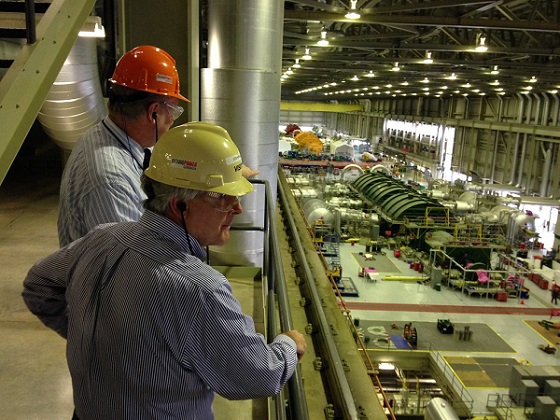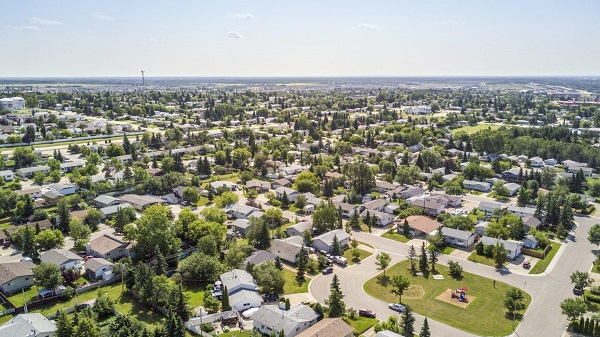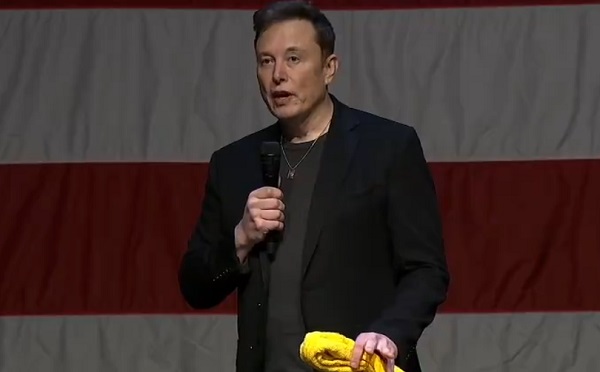Energy
Resource Works Margareta Dovgal on B.C. Climate Policies, and Their Implications

From EnergyNow.ca
By Margareta Dovgal
In the midst of a memorable polar cold snap in January, British Columbia faced a stark reality that should serve as a valuable lesson for climate activists and policymakers alike. As Stewart Muir, the founder of our organization, aptly pointed out at the time, “When it’s cold like now, BC gets two thirds of its energy for heating, etc., from natural gas. Promises to ditch the fuel by 2030, 2035, 2050, are political theatre to be taken with a large scoop of road salt.”
The deep freeze eventually thawed, but it left behind a lingering question about the feasibility of ambitious climate policies in a province heavily reliant on natural gas for its energy needs. The provincial government responded with a proposal to ban conventional gas equipment in new residential, commercial, and institutional buildings by 2030. This move would not only prohibit the sale and installation of gas water heaters but also impose restrictions on new gas furnaces and boilers, permitting them only as part of a hybrid dual-fuel system that integrates electric or gas heat pumps with conventional gas combustion appliances.
While the government embarked on consultations with natural gas contractors, First Nations, and other stakeholders, the public sentiment was reflected in a Castanet news service poll in the Okanagan region. The poll asked, “Should BC ban the use of conventional natural gas for home heating as of 2030?” The results were strikingly clear:
- No: 12,460 (91%)
- Yes: 725 (5.3%)
- Unsure: 501 (3.7%)
However, the proposal to shift away from natural gas raised concerns about BC’s electricity infrastructure. During the cold snap, the province had to import 15% of its electricity, and when Alberta faced even colder temperatures, BC had to step in and send power across the border. Contractors like Al Russell of Prince George questioned the province’s ability to meet increased electricity demands, especially with the limitations of existing infrastructure.
Russell pointed out the need for significant upgrades to the electricity grid, including more and larger transmission lines and transformers. The pressing question remained: “Where are we getting this power from and how are we getting it there? When does this expansion start, and how much will it cost?”
These concerns are not unique to BC. A recent report from the Public Policy Forum emphasized that to achieve its goal of net-zero emissions by 2050, Canada must invest heavily in expanding its electricity generation capacity. This ambitious undertaking comes with a potentially significant cost, with the report envisioning a landscape filled with new dams, turbines, nuclear plants, and solar panels.
Even though BC’s BC Hydro once maintained that no additional power generation was needed, the province now anticipates a shift from a surplus to a deficit of power by 2030, even with the Site C power dam set to be operational by 2025. Consequently, BC Hydro plans to seek new clean and renewable energy sources through a competitive process, inviting power providers to contribute to the province’s energy needs.
Premier David Eby has also announced a significant update to Hydro’s 10-year capital plan, earmarking nearly $36 billion for community and regional infrastructure projects by 2034. However, building new transmission lines in the past has proven to be a lengthy process, taking anywhere from eight to ten years. Eby himself acknowledged that such delays were unacceptable.
Chair of the Energy Futures Initiative, Barry Penner, highlighted the findings of the North American Electric Reliability Corporation, which forecasted increased energy risks for BC in 2026 due to rising demand and the retirement of natural-gas-fired generation.
All these developments transpire as BC advances its CleanBC policy and program. Yet, the BC Business Council voiced concerns about the economic implications, stating that the provincial government’s policies could potentially shrink BC’s economy by $28 billion by 2030, setting prosperity back more than a decade.
The cold snap served as a reminder that the impact of these policies goes beyond mere comfort or convenience. In northern climates like BC’s, extreme cold can pose significant hazards to human health, wellness, and survivability. It also underscores the importance of stable and secure infrastructure, especially with the risk of water pipes bursting during freezing temperatures.
As BC strives to replace some natural gas services with electricity, affordability becomes a pressing concern. There are three key aspects to consider:
- Capital and Operating Costs: Transitioning to electricity comes with increased costs compared to running natural gas systems.
- Heat Pump Installation: Installing heat pumps adds to the financial burden.
- Housing and Rent Costs: The ripple effect of increased costs may result in higher housing and rent expenses, exacerbating affordability challenges in the region.
An editorial from The Orca labeled BC’s natural gas plan as ‘all hot air,’ expressing concerns about making new homes more expensive to build and live in, especially during a housing crisis.
The climate policies in BC carry significant implications, not only for the affordability of living in the province but also for its economic growth and stability. These policies have the potential to impact the types of jobs available, their associated wages, and the province’s global competitiveness.
The net outcome of these policies could determine the fate of industries deeply rooted in BC’s history. If these industries can no longer thrive due to regulatory changes, it may have far-reaching consequences for the well-being of the province’s residents.
As BC navigates this complex landscape, there is an opportunity for the provincial government to engage with and consider the concerns of the public. With an election year on the horizon, the public should continue to ask questions, seek clarity, and actively participate in shaping the future of their province.
- Margareta Dovgal on these issues, and more, on Vancouver’s Spice Radio: https://ow.ly/hxsB50QvfJ9
Margareta Dovgal is Managing Director of Resource Works. Based in Vancouver, she holds a Master of Public Administration in Energy, Technology and Climate Policy from University College London. Beyond her regular advocacy on natural resources, environment, and economic policy, Margareta also leads our annual Indigenous Partnerships Success Showcase. She can be found on Twitter and LinkedIn.
Energy
Is Canada the next nuclear superpower?

From Resource Works
The rise of AI and other technologies have pushed energy demand through the roof, and Canada can help power that with nuclear.
Good to see Prime Minister Justin Trudeau pushing nuclear power as a key contributor to meeting the world’s soaring demand for electricity.
“The energy consumption necessary around AI (artificial intelligence) nobody has properly understood yet,” he said. “We have stepped up big time on nuclear.”
He cited Canada’s uranium reserves and progress in building both full-scale CANDU reactors and small modular reactors (SMRs). He said other countries need to “skate where the puck is going” on cleaner energy sources.
“We know that if we are going to meet our net-zero targets around the world, and certainly in this region, nuclear is going to be really part of the mix.”
He stopped short of saying Canada would build more major nuclear reactors for domestic use but spoke about the development of SMRs. Ottawa has previously stated it wants to become “a global leader in SMR deployment.”
Meanwhile, International Trade Minister Mary Ng said Canada is launching a gateway for nuclear development in the Asia-Pacific region. She said growing Pacific Rim economies will face increasing demand for electricity, not just to curb emissions.
“All this followed CANDU licence-holder AtkinsRéalis announcing a “multi-billion-dollar” sale of two CANDU reactors to Romania, the first to be built since 2007. The federal government contributed $3 billion, the company said.
And in one of our Resource Works Power Struggle podcasts, energy journalist Robert Bryce said: “We’re seeing the revitalization of the nuclear sector… There are a lot of promising signs.”
Also from Bryce: “Forty-seven per cent of the people on the planet today live in electricity poverty. There are over three billion people who live in the unplugged world; 3.7 billion who live in places where electricity consumption is less than what’s consumed by an average kitchen refrigerator.”
Policy Options magazine notes how Canada and 21 other countries signed a 2023 pledge to triple nuclear energy capacity by 2050, and says: “The reality would appear to be clear: there is no feasible net-zero future without the deployment of new nuclear power.”
For Canada, it adds: “We have an opportunity to expand our global status, but this requires overcoming years of policy inaction while other nations have modernized their nuclear strategies. To triple our nuclear capacity by 2050, we need clear priorities and unwavering political commitment.”
Earlier this year, François-Philippe Champagne, federal minister of innovation, science and industry, said nuclear power needs to grow for the world’s renewable-energy economy.
“Nuclear, definitely. For me, we have to look at hydro, we have to look at nuclear, we have to look at small modular reactors, we have to look at wind, we have to look at solar.”
Jonathan Wilkinson, energy and natural resources minister, promised to expedite the approval process for new Canadian nuclear projects.
Canada now gets about 15% of its electricity from nuclear generation, mostly from reactors in Ontario.
But the last nuclear reactor to come into service in Canada was at the Darlington station, east of Toronto, back in 1993. No new nuclear project has been approved since then, but multi-million-dollar upgrades are underway at existing Ontario plants.
Heather Exner-Pirot of the Macdonald-Laurier Institute and Jesse McCormick of the First Nations Major Projects Coalition see SMRs and micro-reactors as a plus for rural and remote areas of Canada that now rely on diesel to generate power. Some First Nations are also interested.
However, the two commentators point out that nuclear developers will need Indigenous support and will have to “provide meaningful economic benefits and consider Indigenous perspectives in project design.”
Now, the Wabigoon Lake nation in Ontario has stepped up as a potential host to a deep underground facility for storing nuclear waste.
As Canada looks to SMRs to meet electricity demand, our country also hopes to sell more uranium to other nations—perhaps with a little help from Russia.
In October, Russian President Vladimir Putin proposed restrictions on Russian uranium exports in retaliation for Western sanctions on Russian oil, gas, and LNG.
That boosted hopes for increased exports of Canadian uranium.
Canada, once the world’s largest uranium producer, is now the world’s second-largest, behind Kazakhstan, and accounts for roughly 13% of global output.
Putin’s threat gave more momentum to the plans underway by NexGen Energy for its $4-billion Rook 1 uranium mine in Saskatchewan.
The Canadian Nuclear Safety Commission has completed its final technical review of the project. Next comes a commission hearing, followed by a final decision on approval.
NexGen is working on detailed engineering plans in preparation for full construction, pending federal approval.
NexGen could push Canada to become the world’s largest uranium producer over the next decade. Other companies are rushing to Saskatchewan to start exploration projects in the Athabasca region, while existing players are reopening dormant mines.
All this follows the commitment by nearly two dozen countries in 2023 to triple their nuclear-energy output by 2050.
And so Britain’s BBC News topped a recent roundup on nuclear power with this headline: “Why Canada could become the next nuclear energy ‘superpower’.”
Alberta
REPORT: Alberta municipalities hit with $37 million carbon tax tab in 2023

Grande Prairie. Getty Images photo
From the Canadian Energy Centre
Federal cash grab driving costs for local governments, driving up property taxes
New data shows the painful economic impact of the federal carbon tax on municipalities.
Municipalities in Alberta paid out more than $37 million in federal carbon taxes in 2023, based on a recent survey commissioned by Alberta Municipal Affairs, with data provided to the Canadian Energy Centre.
About $760,000 of that came from the City of Grande Prairie. In a statement, Mayor Jackie Clayton said “if the carbon tax were removed, City property taxes could be reduced by 0.6 per cent, providing direct financial relief to residents and businesses in Grande Prairie.”
Conducted in October, the survey asked municipal districts, towns and cities in Alberta to disclose the amount of carbon tax paid out for the heating and electrifying of municipal assets and fuel for fleet vehicles.
With these funds, Alberta municipalities could have hired 7,789 high school students at $15 per hour last year with the amount paid to Ottawa.
The cost on municipalities includes:
Lloydminster: $422,248
Calgary: $1,230,300 (estimate)
Medicine Hat: $876,237
Lethbridge: $1,398,000 (estimate)
Grande Prairie: $757,562
Crowsnest Pass: $71,100
Red Deer: $1,495,945
Bonnyville: $19,484
Hinton: $66,829
Several municipalities also noted substantial indirect costs from the carbon tax, including higher rates from vendors that serve the municipality – like gravel truck drivers and road repair providers – passing increased fuel prices onto local governments.
The rising price for materials and goods like traffic lights, steel, lumber and cement, due to higher transportation costs are also hitting the bottom line for local governments.
The City of Grande Prairie paid out $89 million in goods and services in 2023, and the indirect costs of the carbon tax “have had an inflationary impact on those expenses” in addition to the direct costs of the tax.
In her press conference announcing Alberta’s challenge to the federal carbon tax on Oct. 29, 2024, Premier Danielle Smith addressed the pressures the carbon tax places on municipal bottom lines.
“In 2023 alone, the City of Calgary could have hired an additional 112 police officers or firefighters for the amount they sent to Ottawa for the carbon tax,” she said.
In a statement issued on Oct. 7, 2024, Ontario Conservative MP Ryan Williams, shadow minister for international trade, said this issue is nationwide.
“In Belleville, Ontario, the impact of the carbon tax is particularly notable. The city faces an extra $410,000 annually in costs – a burden that directly translates to an increase of 0.37 per cent on residents’ property tax bills.”
There is no rebate yet provided on retail carbon pricing for towns, cities and counties.
In October, the council in Belleville passed a motion asking the federal government to return in full all carbon taxes paid by municipalities in Canada.
The unaltered reproduction of this content is free of charge with attribution to the Canadian Energy Centre.
-

 Brownstone Institute1 day ago
Brownstone Institute1 day agoThe Most Devastating Report So Far
-

 Economy2 days ago
Economy2 days agoCOP 29 leaders demand over a $1 trillion a year in climate reparations from ‘wealthy’ nations. They don’t deserve a nickel.
-

 Censorship Industrial Complex1 day ago
Censorship Industrial Complex1 day agoAnother Mass Grave?
-

 ESG11 hours ago
ESG11 hours agoCan’t afford Rent? Groceries for your kids? Trudeau says suck it up and pay the tax!
-

 Alberta1 day ago
Alberta1 day agoMAiD In Alberta: Province surveying Albertans about assisted suicide policies
-

 Energy1 day ago
Energy1 day agoOttawa’s proposed emission cap lacks any solid scientific or economic rationale
-

 Alberta1 day ago
Alberta1 day agoOn gender, Alberta is following the science
-

 International12 hours ago
International12 hours agoElon Musk praises families on X: ‘We should teach fear of childlessness,’ not pregnancy


